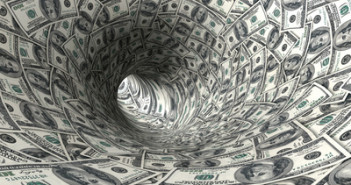It was a slow start to the week last week. There were a few public holidays dotted throughout Europe and there isn’t any economic data due from the UK or US. UK Manufacturing and Industrial Production printed in line with market expectations on Tuesday morning, both sets of data coming in at 0.4% m/m and the pound jumped higher as the latter posted its biggest rise since 2011.
The Bank of England’s Ian McCafferty was speaking to Reuters during the week and said that “the time when it becomes appropriate for interest rates in the UK to start to rise back to a more normal level is approachingâ€. He went on to say that ‘it’s going to depend critically on how the economy performs over the summer and through the autumn.â€Â Latest figures from the ONS then went on to show that the UK unemployment level dropped to 6.6% from 6.8%, 0.1% more than had been forecast.
The report showed that the number of people employed in the UK rose by 345k in Feb-April compared with Nov-Jan to hit an all-time high of 30.54m The number of people out of work dropped by 161k to 2.16m, its lowest level since Jan 2009. The only fly in the ointment was the quarterly pace of wage rises came out at 0.7%, less than the expected 1.2% increase.
By Alex Edwards at UKForex, an international money transfer service
Last but not least, the Bank of England governor Mark Carney gave a keynote speech at the annual Mansion House dinner on Thursday evening. He said that an interest rate rise “could happen sooner rather than markets currently expect†and with that GBP/USD jumped from 1.6830 up through 1.6990. 1.70 is very close now and a break might happen soon, but it’s a big physiological barrier plus we’ve not seen GBP trade over this level in some time vs. USD. We might need some fresh impetus – perhaps by way of UK or US economic data – to prompt this move.
The US dollar lost ground across the board during the middle of the week. A strong Treasury bond auction prompted this move – the US Treasury Department auctioned $13 billion of 30-year bonds at a yield of 3.444%. US economic data, released yesterday, was also weaker than market forecasts, with the core retail sales headline print coming in at 0.1% vs. expectations of 0.4%. This saw EUR/USD recover up from 1.35. Generally speaking though the single currency remains on the back foot as rhetoric around monetary policy continues to be dovish.
The ECB’s Erkki Liikanen said earlier in the week that the bank were “not done yet†went it came to using monetary policy tools whilst Yves Mersch followed up by saying that “what we see is prolonged period of very low inflation could lead to de-anchoring of inflationary expectations, which then themselves would fuel into a spiral that would have a more downward direction.â€Â All eyes now turn to Monday’s European CPI release.
Also this week we look forward to UK inflation data on Tuesday and the monetary policy meeting minuteson Wednesday. Later that evening the FOMC Statement is due and perhaps we may hear reference to the recent run of strong US jobs data in Yellen’s presser.



